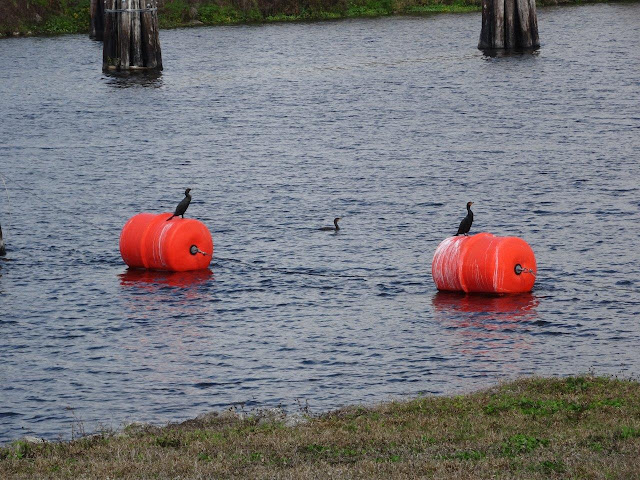This is one of my favorite places in Florida and a place I try to go to at least a couple of times whenever I am in Florida. It is an Audubon facility and has a 2.25 mile boardwalk through a 13,450 acres of wetlands and virgin bald cypress swamp. There are usually lots of volunteers on the boardwalk that will point out birds and other wildlife for you. I strongly suggest you not miss this if you are in Florida permanently or on vacation. Here is their website for more information on visiting:
https://corkscrew.audubon.org/about/sanctuary
This was probably not the best day to visit because temps were in the mid-80s. I do not do well in the heat, but I did take two frozen bottles of water with me.
The visitor center.
And the beginning of the boardwalk.
There is a grassy marsh between the visitor center and the main bald cypress stand.
Lots of ferns and air plants.
And a very tiny lizard of some sort. Note how long his tail is in relation to his body!
By the way, the "swamp" has almost no mosquitos because there are a lot of little fish in the water that eat mosquito larvae.
And an amazing number of flowering plants, even this time of year when flowers are not at their most common.
This funny red-bellied woodpecker was practicing his acrobatics!
It is important as you walk on the boardwalk to be looking out for small things, as well as big things. This little turtle was only about 3" long. I think he was a baby mud turtle.
The floating green stuff here is duckweed, not pond scum!!
This is an anhinga, aka "snake bird." He is called this because his feathers do not have an oily coating so when he swims, all you can see is his long, black neck that looks like a snake.
These next two photos show him drying his wings. He cannot fly until they are dry.
Just another photo of how beautiful this swamp is!
Based on the stripe down his back, this might be a ground skink.
There is a family of white ibis on this branch. The white bird on the right is the parent, and the others are juveniles.
I swear that I have never seen a bird lay down on a branch for a nap with his wings hanging over!! Maybe because they are still chicks? Also, you can tell an ibis very easily because they are the only Florida bird with a downward curved long beak.
A great blue heron and a white heron fishing. They will stare into the water and then jab at a passing fish.
This is a baby alligator that was really only about a foot long. I used a telephoto lens to get this photo.
And this "rock" is a turtle of some sort--probably a Florida soft-shell because his shell is flat. Can't see his neck or face, however.
Heading back to the visitor center.
I surprised a deer, but this was the best photo I got of him/her.
On the road home, I took this photo to show the tall, barbed-wire fences on both sides of the highway. These are panther fences and are intended to keep them from crossing the road and getting hit by cars. On the far right, you can see a tunnel that they can use to go underneath the roadway.
A closeup of how the panther fence wraps around to guide the animals, especially panthers, underneath the roadway. There is also a small creek here, but lots of room on either side for animals to walk. Not the best photo, but best I could do while driving.























































